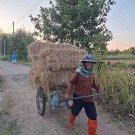Grass removal w/o 'roundup'.
-
Recently Browsing 0 members
- No registered users viewing this page.
-
Topics
-
-
Popular Contributors
-
-
Latest posts...
-
108
Report Thailand Named World’s Safest Holiday Destination in 2025
Are you going to tell me, seriously, that Thailand is safer than Singapore? Really? -
72
How do you control or get rid of dog packs.
Similar......out in the wilds, not in the village, I'll carry a small telescopic baton and an OTF knife (as a last resort). Worst scenario we had was about 12 or so dogs hanging around the car when we returned from a walk.....fortunately they decided to wander off after seeing us. -
2
"Cloudflare" suddenly blocking access to website - any ideas?
Not sure how to answer that, though I guess it's a p2p jobbie. If it is "dodgy", it wasn't a few days ago. But after months of using it with no squeaking from my threat-protections, I can't understand why it should have kicked in yesterday without me changing any settings anywhere. -
72
How do you control or get rid of dog packs.
Many dogs in villages have no owners and most residents don't care . There are those few that take offense and it isn't a problem wanting peace, so it's first the residents duty to fix their animals if they don't want strays or extras running around. Can't blame the dogs for being dogs. This country has millions of stray dogs and it's again the residents fault. They do have a spay-neuter program that picks up and fixes as many as they can. If this was funded by the government, who is responsible for the safety of it's citizens, it would expand countrywide. The more you fix, the less are born, but it has to be stepped up considerably. Millions of people love dogs and would never hurt any not hurting them. Some are raised to hate dogs, and these are the ones who wantonly poison them, including pets that cause no harm whatsoever. That's who I'm talking about.- 1
-

-
16
-
176
Epstein Coverup Continues
I agree, and it would seem like he is lying, upon lying because he's forgotten the lies he previously told, but then again it would seem par for course for this bunch of lying MAGAs!- 1
-

-
-
Popular in The Pub




.thumb.jpeg.d2d19a66404642fd9ff62d6262fd153e.jpeg)






Recommended Posts
Create an account or sign in to comment
You need to be a member in order to leave a comment
Create an account
Sign up for a new account in our community. It's easy!
Register a new accountSign in
Already have an account? Sign in here.
Sign In Now